Tribe Cocoeae Scientific name Jubaea chilensis Rank Species | Subfamily Arecoideae Genus JubaeaKunth Higher classification Jubaea | |
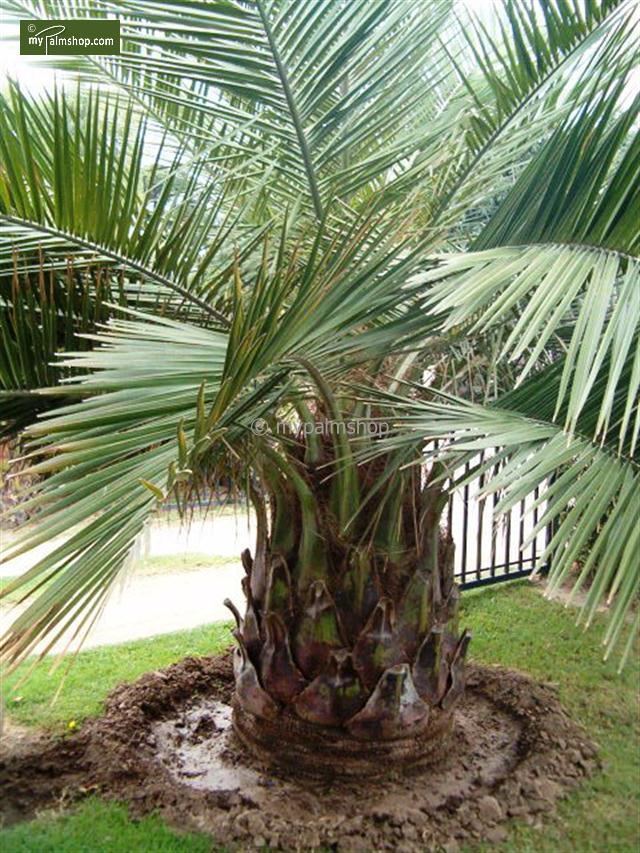 | ||
Similar Butia, Brahea, Chamaerops, Trachycarpus, Sabal | ||
Jubaea movie
Jubaea is a genus of palms (family Arecaceae) with one species, Jubaea chilensis, or J. spectabilis, the Chilean wine palm or Chile cocopalm. It is native to southwestern South America, where it is endemic to a small area of central Chile, between 32°S and 35°S in southern Coquimbo, Valparaíso, Santiago, O'Higgins and northern Maule regions. It was long assumed that the extinct palm tree of Easter Island belonged to this genus too, but it is distinct and now placed in its own genus, Paschalococos.
Contents
- Jubaea movie
- Jubaea 3 after winter
- Etymology
- Growth
- Ecology
- Ornamental use and artificial cultivation
- Economic uses
- Conservation
- References
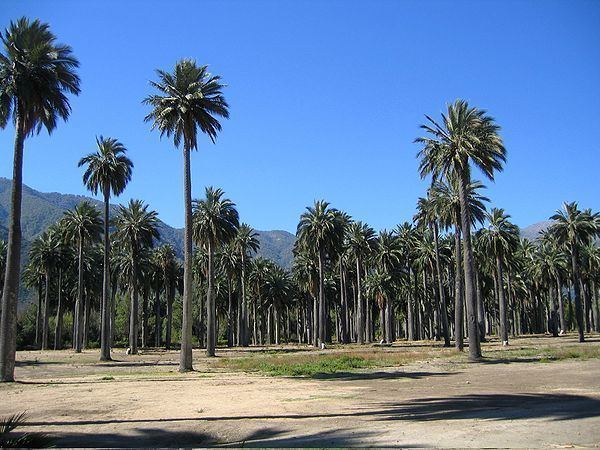
Jubaea 3 after winter
Etymology
The genus was named after Juba II, a Berber king and botanist.
Growth
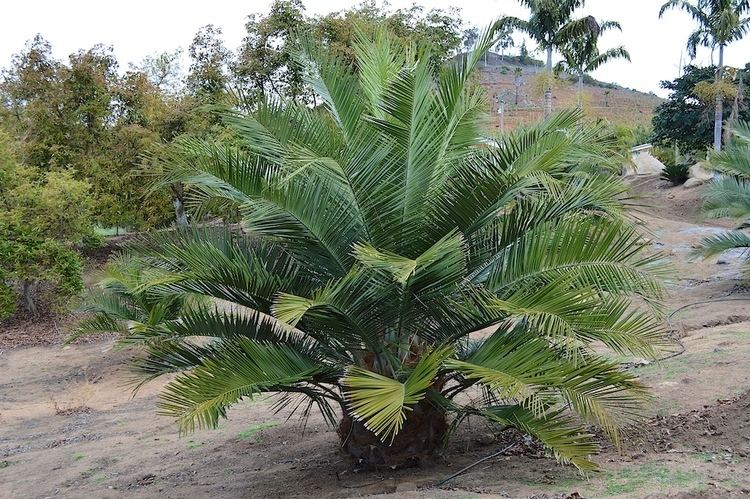
The tree grows very slowly, as it is usual for palm trees. It takes several years until the Jubaea starts getting its weight and size. It may take more than 20 years for the plant to get the height of a medium tree. It can reach a height of 25 m (82 ft) with a trunk up to 1.3 m (4.3 ft) in diameter at the base, often thicker higher up, and with smooth bark. The thickest well-documented Jubaea was that on the estate of J. Harrison Wright in Riverside, California which was 5' 6" (1.68 m) thick "at shoulder height". The largest of several specimens at the Adelaide, South Australia Botanic Garden in 1889 was stated to be 6 ft (1.8 m) thick at the base. A hollow (but living) Jubaea in the Valle de Ocoa in La Campana National Park, Chile is between six and seven feet (between 1.8 and 2.1 m) thick at the base, with no apparent taper in the lower trunk. The 3–5 m (9.8–16.4 ft) leaves are pinnate. The largest individual specimen of indoor plant in the world is the Jubaea chilensis at Kew Gardens, England. Of the 2,600+ known species of palms, Jubaea chilensis is the second most massive, exceeded only by the floodplain or river bottom variety of Borassus aethiopum.
Ecology
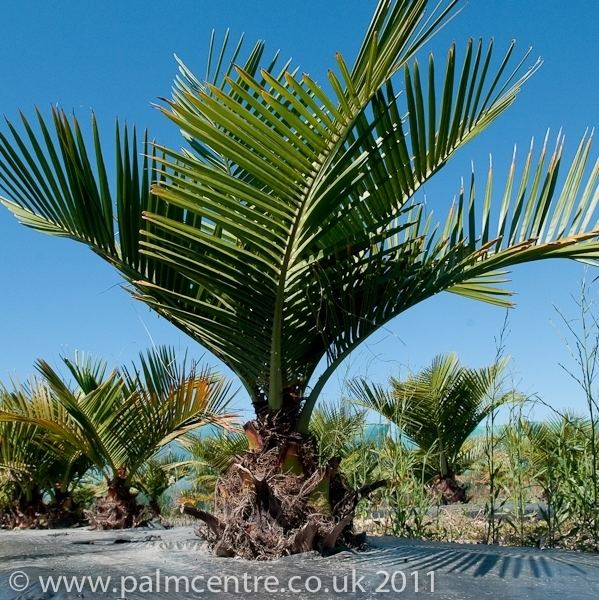
It needs mild winters, but will tolerate frosts down to about −15 °C (5 °F) as well as relatively cool summers, making it one of the hardiest of pinnate-leaved palms; this is because it grows up to 1,400 metres (4,600 ft) above sea level in its natural habitat. In the wild, the tree lives almost exclusively on the steep slopes of ravines.
Ornamental use and artificial cultivation
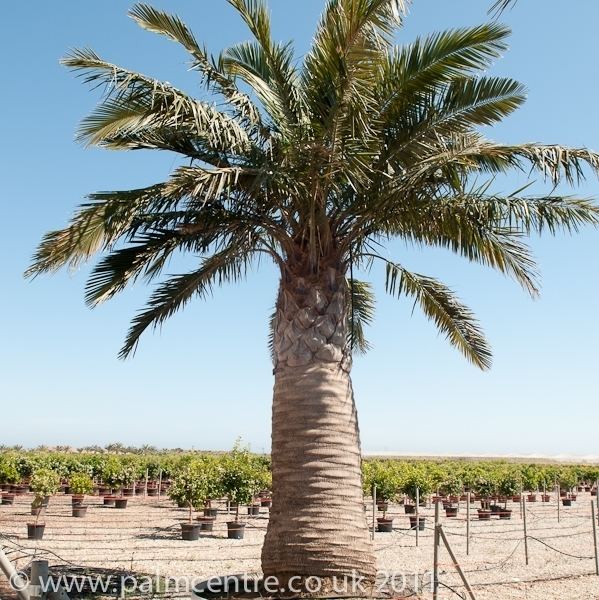
In the U.S. this palm grows best in the west from Seattle, Wa. south to San Diego, Ca. also east through Arizona, New Mexico, and west Texas, this palm suffers and can die in areas with extreme heat combined with high humidity.
Economic uses

The common name refers to the past use of the sap from the trunk of this palm to produce a fermented beverage. The sap is also boiled down into a syrup and sold locally as miel de palma.
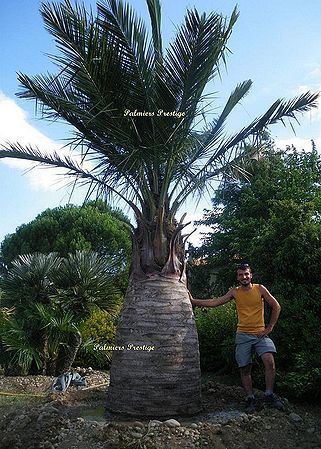
The tree also produces small round fruits that are about 2–3 centimetres (0.79–1.18 in) in diameter. The fruit has a very hard outer shell and whitish meat on the inside, like a miniature coconut. The fresh nuts are commonly sold in the areas where the palms grow during their fruiting season.
Conservation

The species is partially protected within Chile, although pressures of human overpopulation and expansion of grazing area have reduced the population of the Chilean Wine Palm in recent centuries. Unlike most other palm wines, collecting the sap requires cutting down the tree; this harvesting also has reduced the population of Jubaea.
